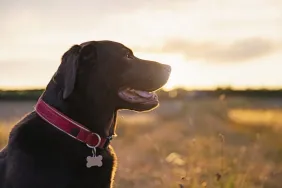Canine body language has been studied by researchers and scientists for years. Dogs are equipped with this very reliable and consistent language to help them communicate their intentions to one another. Their primary goal in using their language is to reduce and resolve conflict. Imagine that! How very civil of them!
Dogs use this very same language with us as well, but we just don’t know enough to actually understand it. I’m not talking about the overt signals which we all know, like a growl, bark or snap, but the full array of their language.
When interacting with our dogs and other dogs, we can look out for the yawn, the lip lick, shake-off, the ear flick, the downward dog looking stretch, and the head turn; just to name a few! These are just some of the many cues dogs use to communicate with us each time we interact with them and when they interact with one another. They use this language to essentially tell us and other dogs, “I’m cool. I mean no harm. You’re coming on a bit strong. Calm down there a bit.”
We are actually very forward and can be a bit overbearing with our dogs in terms of our attention. The way we use of bodies to speak is very different than the way our dogs would use their bodies. I know it can be hard to believe, but yes, your gregarious waggy tail friend believes your interactions to be a bit impolite at times.
Dogs for example, meet each other in an arc. It’s rude, in their world, to walk a straight line toward them and make direct eye contact. In fact, polite dogs do everything they can to avoid the face to face and direct eye contact greeting that we interpret as polite and appropriate.
Dogs turn their head away, they might sniff the ground upon approach, walk up to each other’s sides, then sniff a tushie. This is good dog communication. So, It’s easier to see then why our intentions are not always clear with our dogs. What we do, as humans, does not necessarily make sense for the inner dog.
Learning the very basics of canine body language will help us become good dog listeners and better communicators too. We will have the opportunity to improve the lives of not only our dogs, but each and every dog we meet. If we open ourselves to learning the language they use to communicate, we can strengthen our understanding of our companions and work to reduce the stress and anxiety in their lives.
By learning DogSpeak we can “listen” to our furry friend and by doing so, we will ease our well intentioned cross species miscommunications. We bring them into our lives and love them. We still have the chance though not just to love them but to really listen and hear them speak their own language.









